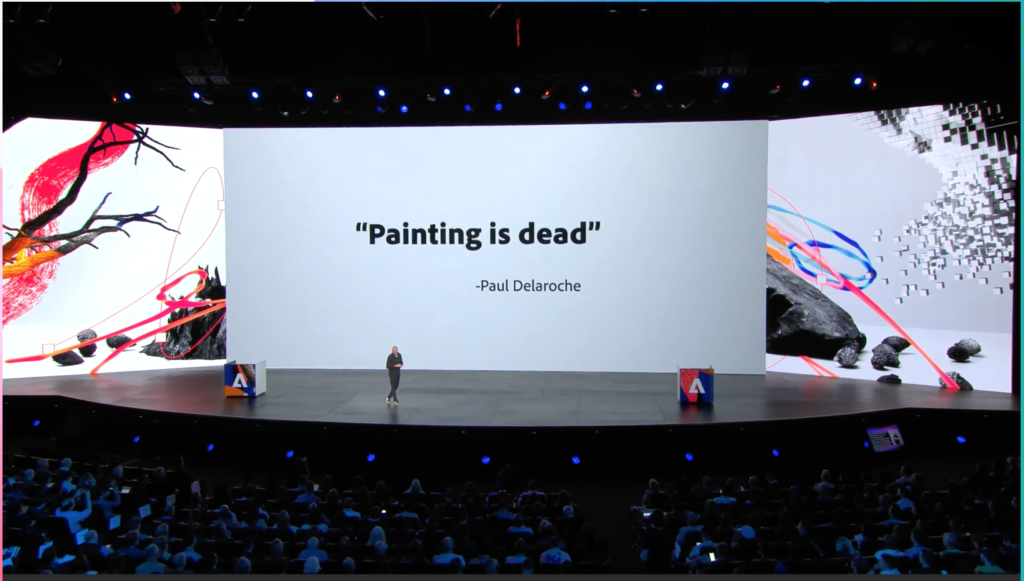After the semester had settled down and the exhibition was more or less successfully dismantled, I was treated to three one-on-one talks about what will happen after the FH – my portfolio, future career, life decisions, what I want to achieve in life and so on. But before I can get to all that, I will have to tackle my Master’s Thesis.
Both the talk with Roman Pürcher and Ursula Lagger were about exactly that, albeit with slightly different focuses. As the title suggests, this blog post attempts to freeze my current headspace in time, because I feel like I got a lot of really useful input during the two sessions and I want to write down what is going through my head right now while it’s still fresh.
Roman’s talk
I talked to Roman about more general approaches to the thesis, when I would want to do what, how to go forward with the Design & Research blog posts and impulses and so on. But we also talked specifically about the practical and theoretical parts of the thesis, only briefly discussing the latter, to be discussed with Ursula Lagger the following day.
The practical part
We talked about some technical approaches and I took some notes on those, but most notably for me was the hypothesis of what could happen if my practical part doesn’t work out like I keep assuming; If anime style animation using AI simply is not possible at a level of quality I deem ‘good enough’ with the current tools, then what happens?
We came to the conclusion that that would be fine, too. In the unlikely event that the animation looks so bad and is so unusable that I could not use it, the worst case scenario would be that my anime video looks like the trailer I already made for StoryVis – featuring essentially no animation, yet brilliant backgrounds, amazing colors and a carefully art-directed aesthetic. That doesn’t sound too bad I think and I could still animate some things manually. This does mean, however, that my conclusion would have to be brutally honest: ‘AI Anime doesn’t work (yet)’. While disappointing, this doesn’t make the conclusion any less valid.
Going forward & next steps
Blog posts and impulses.
Just kidding – while the deadline of 22.FEB.24 approaches slowly but steadily, not to mention my holiday from the 8th til the 15th, I’m also thinking about the time after Design & Research. The next practical task I will need to tackle is of course the actual animation of my characters, since I think I don’t need to spend much more time on the backgrounds because Midjourney is already capable at producing essentially perfect backgrounds.
I want to use Pika to try and animate my already existing AI movie for StoryVis. This would allow me to use a story, art style, world and characters I already established and really like and therefore saves me a lot of time, serving as an experimental playground to test out the AI. Having said that, I really have no experience with animation AI and I don’t even know if you can give the AI images or if it can only do prompt-based generation of if Pika is even the tool to go with. I definitely want to talk to Kris van Hout about her amazing AI movie which featured a lot of very convincing AI generated motion that was generated on top of the generated images from Midjourney.
Ursula Lagger’s talk
Talking with Roman, we came up with a list of questions for Ursula Lagger, mainly concerned with the theoretical and scientific part of the thesis. Upon mentioning the questions about expert interviews and how to write research blog posts as quickly as possible before I go on holiday, it quickly became apparent that the core concept and structure of my theoretical part still needed a lot more work.
The theoretical part: structure
My overall idea of writing a cultural / historic section about past paradigm shifts and how they affected work culture is a great approach, but is a slippery slope that could cost me a lot of time. In order to make the section relevant, I would need to find out which example of innovative technologies in the past bears the most resemblance with the current developments of AI and then compare the two and speculate on the future of AI using my findings. These steps each require immense amounts of actual scientific and literary research. Just filtering out what I won’t write about because it’s not relevant enough will require so much work that it honestly might not be worth it, which is why I will need to drastically reduce my aspirations about the cultural and historical part of the paper, as not to get lost in the sauce.
However short this section is going to be, it necessitates a chapter in which I theorise about the future of AI and how it correlates to a past paradigm shift. For this, I will need to look into future studies, maybe conduct interviews with ‘Zukunftsforschenden’ (I really don’t know how to translate that accurately), and finally, give a prognosis or at least a personal opinion on the topic.
Something else I hadn’t considered up until my talk with Ursula Lagger was the inclusion of examples from works of other creatives and artists using AI technologies. According to Ursula Lagger, this is an absolutely essential part and cannot be left out of the thesis. A no-brainer, really, that contextualises my own findings and work in the current landscape of AI tools and possibilities. There are so many approaches and use-cases out there, out of which I have chosen a very niche combination: the creation of an anime.
- How have other people tackled this?
- Why am I not doing it the same way?
- What AM I doing the same way?
- What about ethical concerns of certain use cases?
- What do I think of potentially dangerous use cases?
- How are people using AI in the best and worst ways?
- How can I compare this to new technologies in the past?
New technologies usually scare people and can cause shifts not only in the work culture but also in the art form itself. Another obvious observation if you think about it. Maybe I can write about early awful Photoshop creations of people overusing the layer styles resulting in terrible artworks, or how early photography was used completely differently from today? I could compare that to early AI creations, how we can usually tell when something is generated by an AI, how anatomy is weird, how text doesn’t work properly or how scripts and company or movie names generated by ChatGPT usually sound very cheesy and almost have a style on their own.
It’s only a matter of time when young artists figure out how to make something genuinely new with these new tools, genuinely good works of art that are not at all hindered by AI, but made possible because of it. Ultimately, that’s what I want to achieve with my practical part too – a genuinely good work of art that doesn’t scream ‘I WAS MADE WITH AI’.
Going forward & next steps
In any case, it seems like my practical part still requires a lot of thought and work to figure out how to weigh each of its parts, which at the moment seem to be:
- Documentation of my practical work
- Comparison to other approaches
- Similarities to paradigm shifts in the past
- Conclusions and Speculations
This list is what the theoretical chapters could look like judging from my current state of mind. I want to use the time until the 22nd of February to figure things out even further, continuing to write blog posts about my findings. I feel like Ursula Lagger’s inputs were as useful as they were abundant – so I need time to let all of it sit and see what I truly want to write about in the theoretical section of my thesis.






